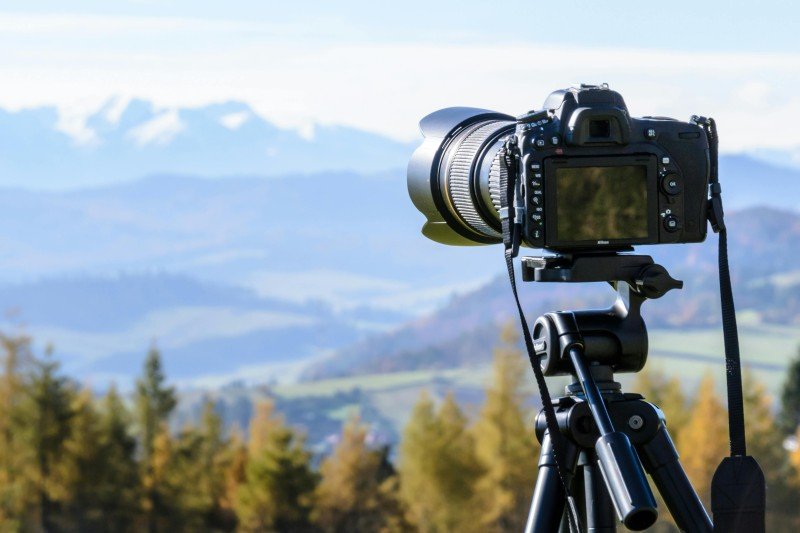Mirrorless camera technology represents a significant advancement in the world of photography. Unlike traditional DSLRs that use a mirror mechanism to reflect light into an optical viewfinder, mirrorless cameras operate without this component. This key difference allows for a more compact design, making mirrorless cameras lighter and often easier to carry around, which is a major advantage for travel and street photographers.
At the heart of a mirrorless camera is its electronic viewfinder (EVF) or digital display. This technology captures real-time images through the lens, allowing photographers to see exactly what the sensor will capture. This feature not only provides a clear preview but also enables various overlays, such as histograms and exposure warnings, enhancing the shooting experience. In contrast, DSLRs rely on an optical viewfinder that doesn’t show real-time changes made in settings like aperture or ISO.
Another compelling aspect of mirrorless cameras is their autofocus capabilities. Many models utilize on-sensor phase detection, offering fast and accurate focusing even in low light conditions. This technology is often praised for its speed when capturing moving subjects. In comparison, DSLRs typically rely on a separate phase-detection system that can be slower, especially when switching between live view and shooting modes.
Battery life, however, is one area where traditional DSLRs take the lead. Because mirrorless cameras depend heavily on electronic components and screens, they tend to consume more power, resulting in shorter battery life. This aspect can be a crucial consideration for photographers who spend long hours shooting and may not have easy access to charging solutions.
Exploring DSLR Advantages
When it comes to photography, Digital Single-Lens Reflex (DSLR) cameras have long been a favorite among both amateurs and professionals. One of the most significant advantages of DSLRs is their optical viewfinder. Unlike electronic viewfinders found in many mirrorless cameras, the optical viewfinder provides a clear, real-time view of the scene, making it easier to compose shots in bright sunlight and fast-moving situations.
Another key benefit of DSLRs is their battery life. Typically, DSLRs can capture thousands of photos on a single charge, thanks to their ability to take pictures without using energy-draining displays or electronic viewfinders. This extended battery life allows photographers to shoot for longer periods without the need to worry about recharging, which is particularly advantageous during events like weddings or outdoor excursions.
DSLRs also tend to offer a more extensive selection of lenses and accessories. Many photographers appreciate the wide variety of lenses available for DSLRs, ranging from ultra-wide-angle to telephoto, which can enhance the creative possibilities. Additionally, the robustness and durability of DSLRs make them ideal for different environments, whether you're shooting in a studio or out in rugged terrain.
Lastly, DSLRs often have faster autofocus systems, especially in low-light conditions. This speed allows photographers to capture the perfect moment with ease, making DSLRs suitable for action shots and wildlife photography. For those who love to capture images on the move, the swift focusing capabilities can be a game-changer, helping to ensure that none of the magic is missed.
Comparing Portability and Weight
When it comes to choosing between mirrorless cameras and DSLRs, one of the most significant factors to consider is portability and weight. For photographers who are always on the move or looking to travel light, this can make a big difference in their overall experience. Mirrorless cameras are typically more compact and lightweight than their DSLR counterparts, thanks to their design that eliminates the need for a bulky mirror box and an optical viewfinder.
DSLRs are known for their robust construction, but that often comes at the cost of added weight. Many enthusiasts appreciate the solid feel of a DSLR, as it often conveys a sense of stability and durability. However, lugging around a heavy camera can become tedious, especially during long shoots or when trekking in remote locations. This is where the sleek design of mirrorless cameras shines, making them more appealing to travelers and casual shooters alike.
Additionally, the availability of lightweight lenses for mirrorless systems enhances their portability. Many manufacturers are producing smaller, lighter lenses specifically designed for these cameras, which offers great versatility without excessive bulk. On the other hand, DSLR lenses can be heavier and bulkier, which might deter photographers from bringing multiple lenses along for a shoot.
Ultimately, the choice between mirrorless and DSLR will depend on the photographer's needs. If portability and weight are major concerns, a mirrorless camera may be the way to go. However, those who prioritize a certain level of heft and comfort might still lean toward DSLRs. Understanding these differences can help you make a more informed decision based on your photography style and lifestyle.
Evaluating Image Quality and Performance
Another aspect to consider is the autofocus system. DSLRs traditionally rely on phase detection for fast focusing, which works well for stills. However, mirrorless cameras have made significant strides in this area, utilizing on-sensor phase detection. This means that they can achieve rapid and accurate focusing even in challenging lighting conditions, which is especially beneficial for action photography. The autofocus performance can dramatically affect your image quality, particularly in fast-paced environments.
Additionally, the performance of these cameras in different shooting scenarios varies. If you're into sports or wildlife photography, the ability to capture fast-moving subjects clearly is vital. Mirrorless cameras often excel in burst shooting, allowing you to take multiple photos in rapid succession with minimal shutter lag. On the other hand, DSLRs still hold an edge when it comes to battery life, as these cameras usually allow for more shots per charge, an important consideration for extended shooting sessions.
Finally, image stabilization technology can also impact quality. Many mirrorless models come with in-body stabilization, which helps reduce blur from camera shake, especially at slower shutter speeds. While some DSLRs have built-in stabilization as well, many rely on lens stabilization techniques. Evaluating these features will help you determine which camera system aligns better with your photography style and goals.


